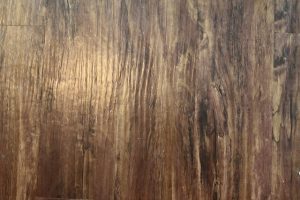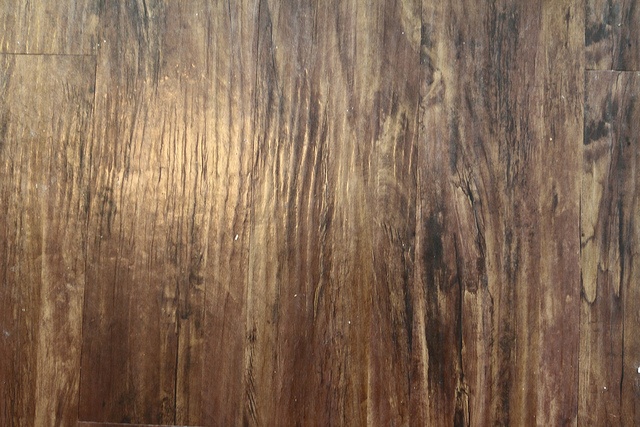If you need to remove vinyl flooring , don’t despair. This is a big, messy task, but once you get started, you’ll find that it doesn’t take much time to complete. It’s worth noting here that you’ll need quite a bit longer to complete this project if it involves removing subfloor that has been damaged beyond repair.
Essential Tools for Removing Vinyl Flooring
Assemble as many tools as you can for this task. You’ll be glad you had everything on hand ahead of time because once you get started, you probably won’t feel like stopping!
- Flat prybar to remove baseboards and trim
- Flat scraping blade
- Utility knife
- Floor scraper
- Heat gun

How to Remove Vinyl Flooring: Just the Basics
Vinyl flooring is usually glued onto the edges of the subfloor, and it’s usually secured in place by baseboards and/or trim. The first step to successfully removing vinyl flooring is to remove the trim. You can simply rip it off with the help of a pry bar if you don’t want to re-use it, and if you’re planning to re-paint your walls. If you do want to reuse your trim, and you don’t want to repaint your walls, take a careful approach to this step.
1. Obtain a slim block of wood, about 1 inch thick.
2. Carefully wedge the end of your prybar underneath the end of a trim piece.
3. Slide the block of wood between the wall and the prybar.
4. Carefully pry the trim away. Work slowly. Keep moving the block of wood so your wall stays protected.
5. If you are going to reinstall your trim, use a carpenter’s pencil or a sharpie marker to make notes about which piece belongs in which location. Use the word “up” with an arrow to indicate which edge belongs on top and which edge should go against the floor.
6. With a sharp utility knife, start cutting into the vinyl flooring. Aim for a spot between 8 and 12 inches from the wall, and if you’re lucky, you won’t encounter any adhesive. Cut all around the perimeter of the room.
7. Start with one corner and experiment to see if there’s any adhesive holding the vinyl onto the floor. If not, go ahead and start cutting strips unless you hope to re-use the vinyl for another project. Cutting the vinyl into strips makes for easier removal, and if you have helpers, everyone can work on a different section of the floor.
8. Once you reach sections with adhesive, see if you can use the pry bar to scrape away some of the glue and lift a corner section. Keep at it. If you have a helper, take turns working the prybar and lifting up the flooring. Cut away sections as they become heavier and harder to deal with.
9. If the prybar isn’t working, try the heat gun. Use low heat, move it around, and keep on pulling. The flooring will come up eventually.
10. If you are dealing with vinyl tiles, you’ll have a lot more adhesive to deal with. Get some help! Listen to music as you scrape. Try heating the top with the heat gun, working in sections. Have one person operate the heat gun while the other one works on releasing the tiles. This job calls for a ton of elbow grease but you’ll get it done eventually.
How to Remove Vinyl Flooring from Wood
If there’s wood directly underneath the vinyl flooring, you’ll have to take a careful approach to the removal process. Use a utility knife to score individual tiles into 4 to 6 smaller sections. The first section of the first tile is going to be hardest to remove. Consider heating it with a heat gun to see if you can get it to budge a little bit easier. Once you’ve warmed it up, wedge the tip of your putty knife underneath and start wiggling.
1. If you are dealing with linoleum instead of tiles, the odds are good that you can simply cut the center area into strips as mentioned in the basic vinyl removal guide found in the previous section.
2. Once you’ve removed the tiles or linoleum, it’s time to remove the vinyl flooring adhesive from the wood. This usually calls for the help of a heat gun, and it means working in sections no bigger than about 12 inches square. It’s helpful to have a partner for this task! Hold the heat gun a few inches away from the floor, and be careful not to overheat it as this can cause scorching.
3. Once a section has been warmed, follow up with the floor scraper. With short, even strokes, push it across the adhesive. Don’t rush this – the last thing you want to do is damage the floor and wind up repairing it.
4. After you’ve removed as much adhesive as you can, you might feel fine with prepping for new flooring. If the wood is still rough, consider sanding it to clean up the rest of the adhesive.
How to Remove Vinyl Flooring from Cement
To remove vinyl flooring from cement, you can try to cut away the linoleum or vinyl squares as described in the previous sections. After you remove the vinyl, you’ll probably notice that much of the adhesive remains. That’s because the adhesive (also known as mastic) used on vinyl floors forms a very tight bond with cement.
Removing mastic from cement calls for the use of a special solvent called vinyl mastic remover. Protective goggles and chemical-resistant gloves are essential for completing this task.
1. Be sure to read the instructions on the mastic remover. Some brands need to be diluted with water, while others are intended to be used as formulated.
2. Before prepping the mastic, sweep or vacuum the floor to remove as much debris as possible.
3. Follow the manufacturer’s instructions for applying the mastic remover. Some brands call for pouring it straight onto the floor, while others call for application with a sponge.
4. You’ll want to work in sections just a few feet across. With a stiff scrub brush, scrub the mastic remover into the adhesive. Let it sit for 5 minutes, or for as long as the manufacturer recommends.
5. Use the floor scraper to carefully push the mastic up. If it won’t budge, let the remover sit for a few minutes longer, and then try again.
6. Remove as much mastic as you can. As it accumulates on the scraper, use a large sponge to wipe it off into a basin or bucket.
7. Keep on covering small sections, repeating steps 4 through 6 until you finish the job. You may have to swap to a smaller hand-held scraper to get into corners or remove tough mastic from the cement floor.
8. When you are finished, sprinkle oil absorbing granules (available for purchase at auto parts stores) all over the floor. Wait about 10 minutes, then sweep up after they have absorbed all the wet, sticky residue.
9. Use floor cleaner to scrub the concrete. Choose a non-residue type and be sure to dilute it according to the manufacturer’s recommendations.
10. After scrubbing, mop up the floor with fresh water to rinse away any remaining floor cleaner. Let the floor dry completely before preparing to lay down new flooring.
How to Remove Plywood Subfloor
If your subfloor is squeaking, feels spongy, or is badly damaged, it’s best to remove it before installing new subflooring. Luckily, this can be accomplished with basic hand tools and some persistence, usually in the course of an hour or two if you’re working in a small area.
Before you start, know whether there are electric wires or plumbing pipes underneath the floor. If you think you might cross any of these, consider calling a professional for help. Always proceed with caution when removing subfloor.
1. Assuming you have already removed the vinyl flooring, you’ll next need to determine if there is particleboard on top of the plywood subfloor. If there is, you’ll need to jam the tip of a flat prybar underneath the particle board and use the prybar like a fulcrum, lifting the edge of the particle board up. It will probably break. This is normal!
2. Pry up the rest of the particle board. This won’t take long once you’ve gotten started. Be sure to dispose of nails carefully.
3. If just a small, center piece of subfloor is damaged, you can cut it out with a circular saw. Be careful not to cut into joists when doing this. A one-inch setting ought to be sufficient.
4. Next, look for parallel lines where the subfloor is connected to the joists. You want to start on an edge and again use the prybar to start lifting the edge of the subfloor off the joist. Don’t worry if it breaks. Keep on working at it until you’ve removed the damaged pieces. Be careful not to lose your balance if you are standing on floor joists. You may want to obtain a section of plywood to use as a platform for standing on.
5. If nails are stuck, you can use a reciprocating saw to cut through them. Be sure to wear appropriate eye and ear protection if you need to take this step. Use a hammer to pound cut nail edges back down into the joists after they are cut.
6. You may need to add supportive framing to fix areas where partial subfloor was removed. The easiest way to repair a damaged subfloor is to use 2×6 lumber to create a new, solid base for the new subfloor piece. Use framing nails to join the new 2×6 pieces to existing ones. Be sure that new frame pieces are perfectly level next to older ones.
7. Cut new pieces of plywood to fit in the gap. These will expand, so be sure to leave a 1/8” space between new pieces of plywood subfloor and old ones. Fasten it to the joists / floor framing with deck screws or galvanized framing nails.
How Much Time Does It Take to Remove Vinyl Flooring?
The answer to this question depends largely on how much flooring you need to remove, and how many people you have helping you! Old vinyl can be very difficult to deal with, but it’s a good feeling to get it out of the way so you can install something you like better. The sooner you get started, the sooner you’ll be ready to move on to the next stage and ultimately start enjoying some new flooring instead of your old, tired vinyl. We wish you the best of luck as you take on this important project!




